A strong solar flare measuring M7.4 erupted from Active Region 3599 (beta-gamma-gamma) at 12:13 UTC on March 10, 2024. The event started at 12:00 UTC and ended at 12:20.
The flare was associated with a Type II Radio Emission with an estimated velocity of 714 km/s. Type II emissions typically indicate a coronal mass ejection (CME) is associated with a flare event.
Additionally, a 10cm Radio Burst (tenflare) lasting 4 minutes and with peak flux of 340 sfu was associated with this event. A 10cm radio burst indicates that the electromagnetic burst associated with a solar flare at the 10cm wavelength was double or greater than the initial 10cm radio background. This can be indicative of significant radio noise in association with a solar flare. This noise is generally short-lived but can cause interference for sensitive receivers including radar, GPS, and satellite communications.
While the location of this region does not favor Earth-directed flares, at least a part of it may be Earth-directed. We’ll have to wait for coronagraph imagery to confirm.
Radio frequencies were forecast to be most degraded over eastern South America, Atlantic Ocean, parts of SW Europe, and Africa at the time of the flare.
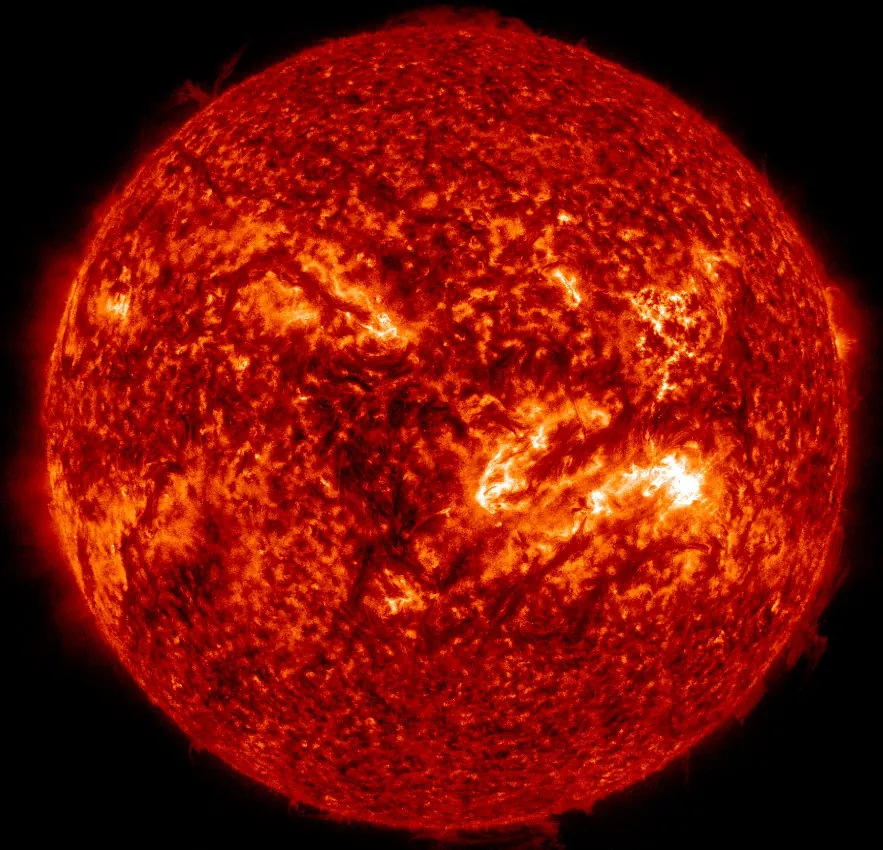
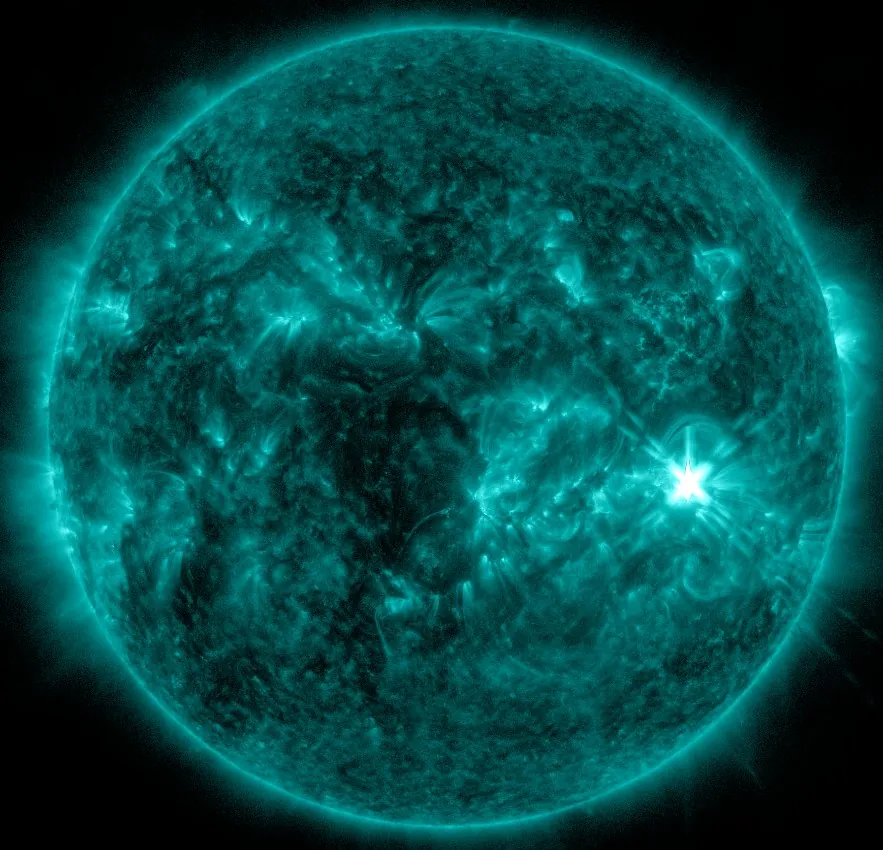

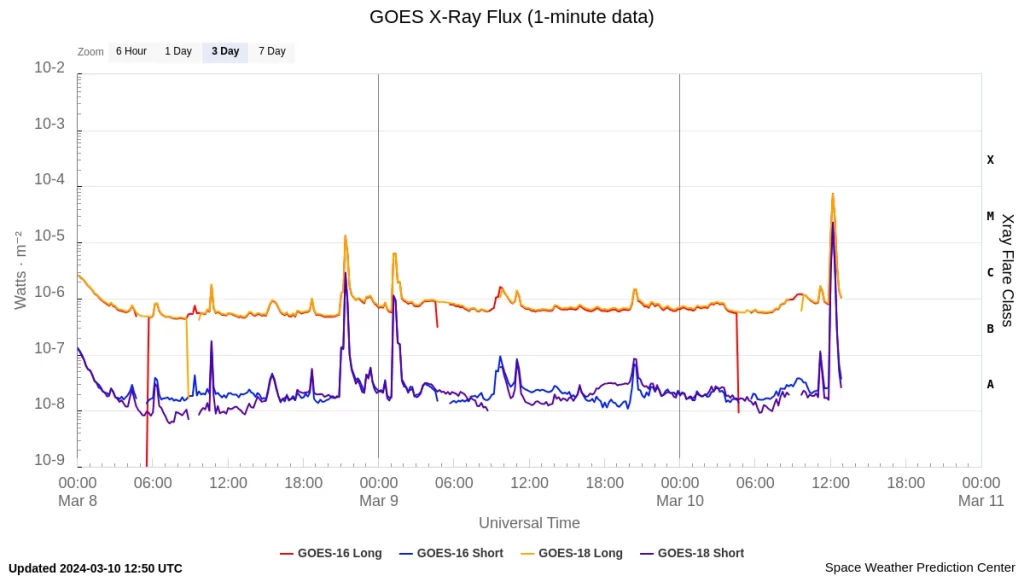

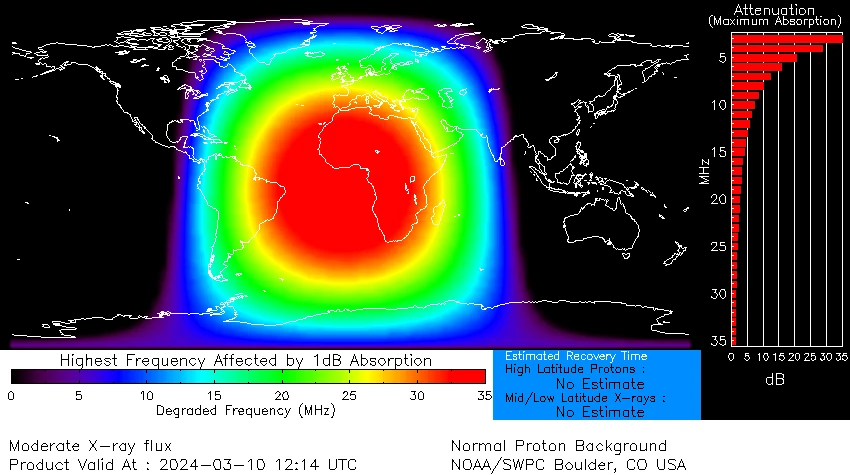

Solar activity was at low levels in 24 hours to 12:13 UTC today. The strongest flare of the period was a C1.6 at 11:17 from Region 3599 (beta-gamma-delta). Minor growth was observed in its leader spots while many of its intermediate spots were in decay. The remaining five active regions were mostly stable or in gradual decay.
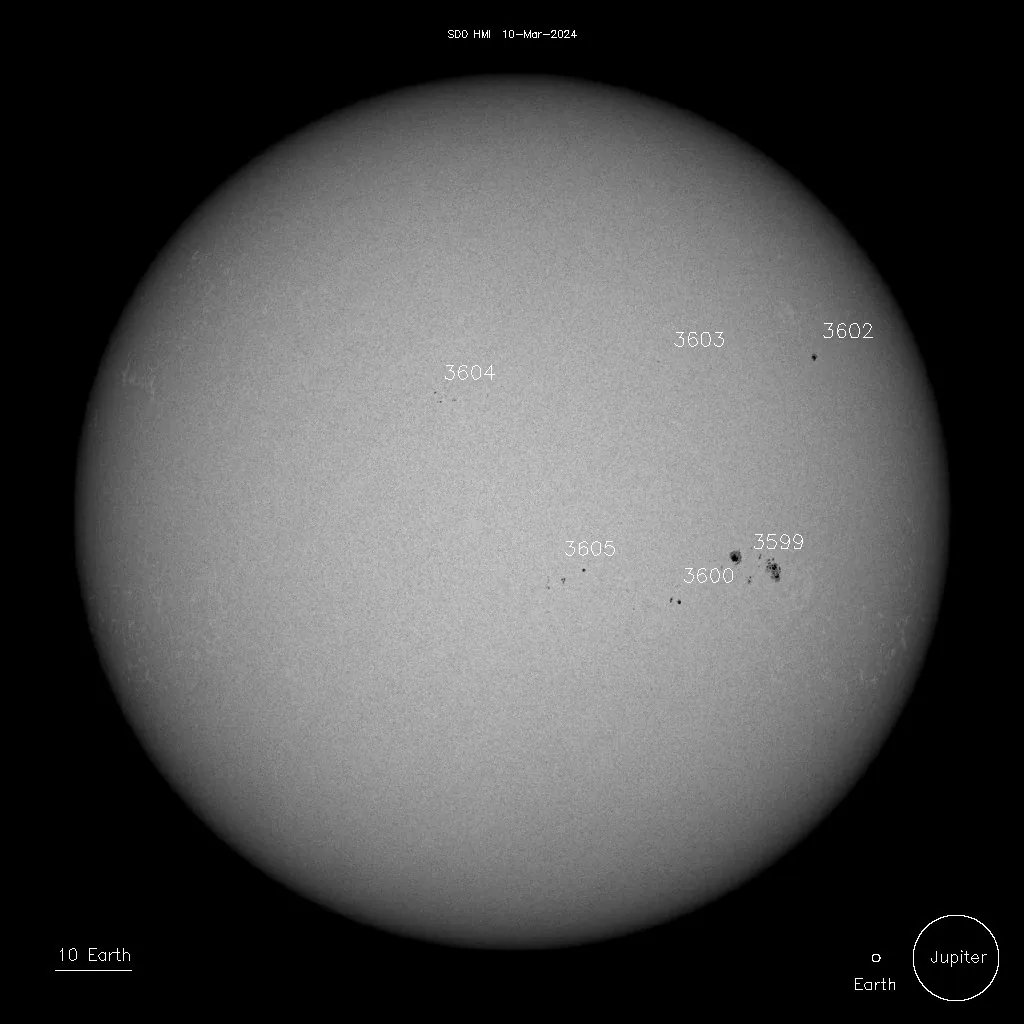

A large eruption was observed beyond the northeast limb at around 22:00 UTC on March 9 but the CME was not directed toward Earth.
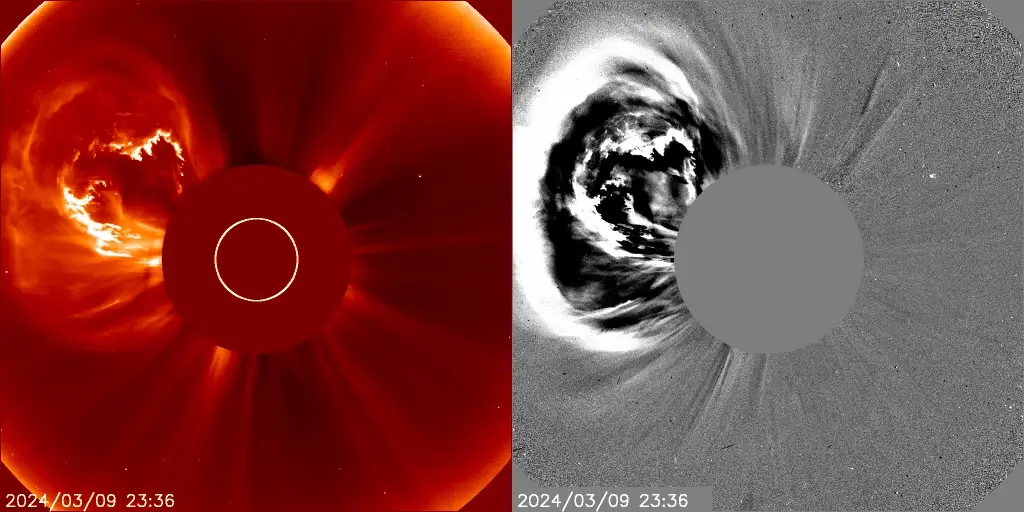

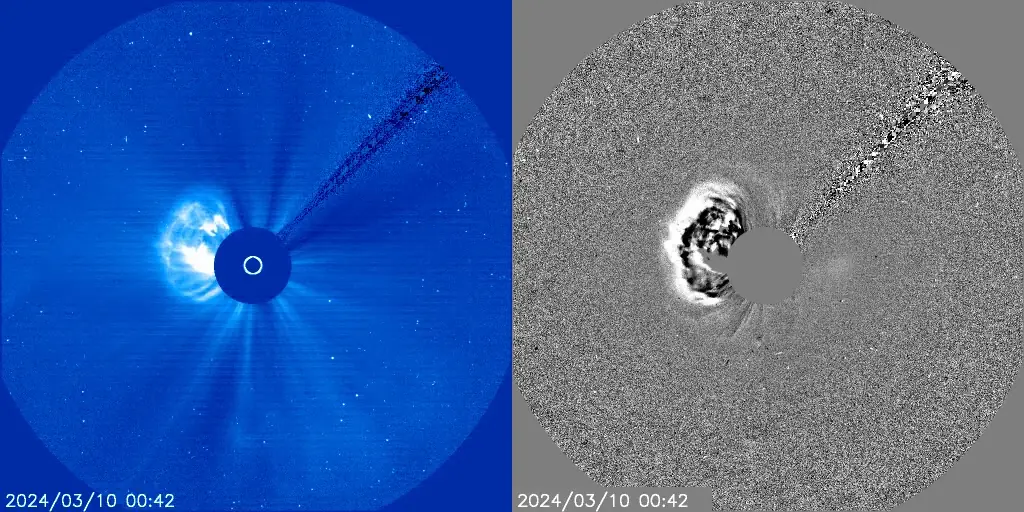

Solar wind parameters during the same period reflected a slightly enhanced environment. Total magnetic field strength reached 6 nT and the Bz component briefly reached as far south as -5 nT. Solar wind speeds were observed between ~400 – 470 km/s. Phi angle was in a mostly negative orientation.
The geomagnetic field was at quiet to unsettled levels and mostly quiet levels, with possible isolated unsettled conditions are expected on March 10. Continued quiet to unsettled periods are expected through March 12 as a new negative polarity coronal hole high speed stream (CH HSS) becomes effective.
References:
1 Forecast Discussion Issued – 2024 Mar 10 1230 UTC – Prepared by the U.S. Dept. of Commerce, NOAA, Space Weather Prediction Center
Featured image: NASA/SDO AIA 131, Helioviewer, The Watchers
Filament eruption produces large CME, slight graze possible
Thursday, March 7, 2024
Major X6.3 solar flare erupts from Region 3590
Thursday, February 22, 2024
Two X-class solar flares – X1.8 and X1.7 erupt from Region 3590
Thursday, February 22, 2024
Major X2.5 solar flare erupts from AR 3576, producing large CME
Friday, February 16, 2024
Three CMEs heading toward Earth, impact expected on February 13
Monday, February 12, 2024
Proton flux rising after powerful farside eruption, S1 – Minor solar radiation storm
Monday, February 12, 2024
M6.5 solar flare erupts from AR 3576, G2 – Moderate geomagnetic storm watch
Monday, February 12, 2024